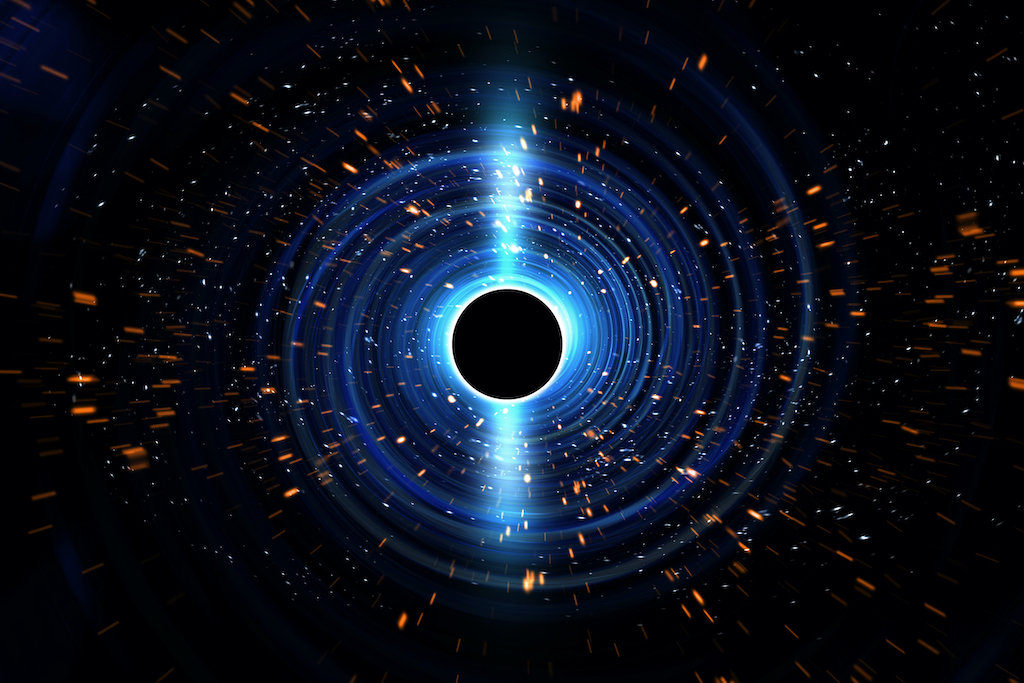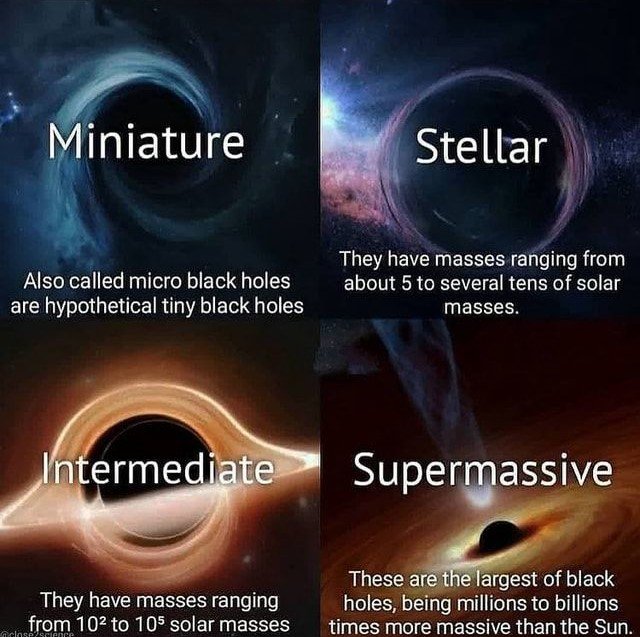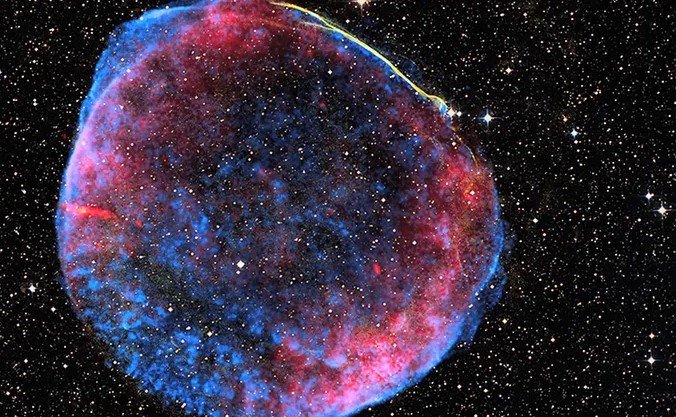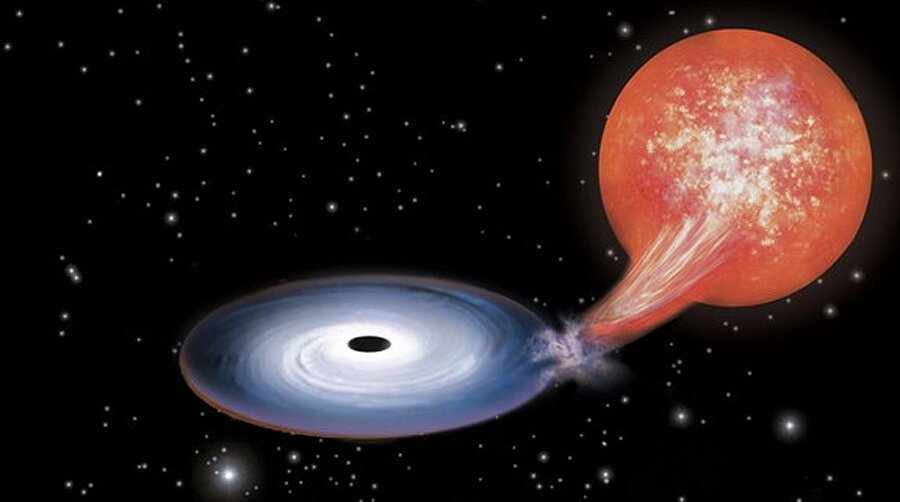Is a black hole made of anything? Black holes are among the most mysterious and intriguing objects in the universe, captivating the imagination of scientists and the public alike. With their immense gravitational pull and enigmatic nature, they challenge our understanding of physics and the very fabric of space and time. But what exactly is a black hole made of? Are they just voids in space, or do they possess some kind of material or substance? In this article, we’ll delve into the composition of black holes, exploring the science, theories, and mysteries that surround these fascinating cosmic phenomena.
Is a black hole made of anything? Understanding Black Holes
What are Black Holes?

Black holes are regions in space where the gravitational pull is so strong that nothing, not even light, can escape from them. This occurs because the mass of a black hole is concentrated into an incredibly small space, creating an intense gravitational field. But how do these mysterious objects come into existence?
Formation of Black Holes: Black holes are formed when massive stars exhaust their nuclear fuel and undergo gravitational collapse. As the star collapses under its own gravity, it compresses into a point of infinite density known as a singularity. Surrounding the singularity is the event horizon, the point beyond which nothing can escape the black hole’s grasp.
Types of Black Holes: There are generally four main types of black holes:

- Stellar Black Holes: Formed from the remnants of massive stars.
- Supermassive Black Holes: Found at the centers of galaxies, containing millions to billions of solar masses.
- Intermediate and Miniature Black Holes: Hypothetical types that may exist but have not yet been observed.
The Anatomy of a Black Hole
Understanding the structure of a black hole is essential to grasping what it might be made of. Black holes have two primary components:
- Event Horizon: The boundary around a black hole beyond which nothing can escape. It marks the point of no return.
- Singularity: The core of the black hole, where all its mass is thought to be concentrated. The singularity represents a point of infinite density and zero volume.
The unique nature of black holes leads us to ponder their composition, but to understand what they might be made of, we must delve into the science behind their formation.
The Science Behind Black Hole Formation
Black holes are formed through processes that begin with stellar evolution and end in catastrophic collapse. This journey from a shining star to a dark void is a fascinating one.
Stellar Evolution and Collapse
Stars, like our Sun, burn hydrogen fuel through nuclear fusion. This process balances the gravitational forces trying to compress the star. However, when a star several times more massive than the Sun exhausts its nuclear fuel, gravity overwhelms, causing the star to collapse in on itself.
Supernovae: The Birthplace of Black Holes

The collapse of massive stars often results in a supernova explosion, leaving behind a core that can become a black hole. If the remaining mass is sufficient, it can collapse further into a black hole, compressing into an incredibly small area, forming a singularity.
Gravitational Collapse and Density
The concept of gravitational collapse is crucial to understanding black holes. As the star’s core collapses, its density increases exponentially. Eventually, the core’s gravitational pull becomes so strong that it prevents even light from escaping, leading to the formation of a black hole.
Composition of Black Holes: Debunking Myths
Are Black Holes Solid Objects?
One common misconception is that black holes are solid objects made of matter. In reality, black holes are not solid in the traditional sense. They are regions of space dominated by gravity, where matter and energy are densely packed.
Matter vs. Energy in Black Holes: The concept of mass-energy equivalence, described by Einstein’s famous equation (E=mc^2), plays a key role in understanding black holes. The matter that falls into a black hole is converted into energy, contributing to the black hole’s gravitational pull.
Black Holes and Quantum Mechanics: Quantum mechanics suggests that black holes are not made of conventional matter but exist as complex fields of energy and particles at extreme densities. This challenges our understanding of matter and leads to intriguing questions about what truly lies within a black hole.
The Role of Mass and Gravity
The immense gravitational force of a black hole is determined by its mass. This mass is not concentrated in a solid core but is spread across the singularity, affecting the curvature of space-time.
Gravitational Forces at Play: Black holes exert gravitational forces that warp space-time, creating what is known as a gravity well. Objects caught within this well are pulled towards the singularity, trapped by the black hole’s gravitational field.
The Mass-Energy Equivalence: The mass-energy equivalence principle reveals that the mass of a black hole is tied to the energy contained within it. This energy, which is the result of gravitational compression and the infall of matter, is what gives black holes their unique characteristics.
Inside a Black Hole: Speculative Theories
The enigmatic interior of black holes invites speculation and theoretical exploration. What lies beyond the event horizon remains one of the most tantalizing mysteries in astrophysics.
Singularity: The Core of a Black Hole
The singularity represents a point where the laws of physics as we know them break down. Its properties are challenging to comprehend, as it defies the traditional understanding of matter and density.
Infinite Density and Spacetime Curvature: The singularity is believed to possess infinite density, where the curvature of spacetime becomes extreme. This creates an environment where conventional physics cannot apply.
Theoretical Models of Singularity: Various theoretical models attempt to describe the nature of singularities. Some suggest that they may be bridges to other universes, while others propose that singularities represent a new form of matter altogether.
Quantum Foam and Planck Scale
Quantum mechanics introduces the concept of quantum foam at the Planck scale, where spacetime is thought to fluctuate at incredibly small scales. This has implications for understanding the inner workings of black holes.
Quantum Gravity Insights: Quantum gravity theories aim to reconcile general relativity with quantum mechanics, offering insights into the nature of black holes. They suggest that spacetime at the singularity may consist of a complex interplay of quantum fields.
Speculations on Subatomic Composition: Speculative theories propose that black holes may contain exotic particles or subatomic structures beyond our current understanding. These could include hypothetical particles that exist at energy levels inaccessible to current technology.
Are Black Holes Made of Dark Matter?
The concept of dark matter adds another layer of complexity to the study of black holes. Could dark matter play a role in their composition?
Definition and Characteristics of Dark Matter
Dark matter is a mysterious form of matter that does not emit, absorb, or reflect light, making it invisible to current
observational techniques. It is believed to make up a significant portion of the universe’s mass, exerting gravitational forces on visible matter.
Theories Linking Dark Matter and Black Holes
Some theories suggest that black holes could be composed partly of dark matter. Since dark matter interacts primarily through gravity, it might accumulate around or within black holes, contributing to their mass and gravitational influence.
While this theory remains speculative, ongoing research aims to explore the potential connections between dark matter and black holes, seeking evidence to support or refute such claims.
Hawking Radiation and Black Hole Evaporation
Stephen Hawking’s groundbreaking work on black holes introduced the concept of Hawking radiation, a phenomenon that offers insights into black hole composition and behavior.
Stephen Hawking’s Contributions
Stephen Hawking proposed that black holes are not entirely black but emit radiation due to quantum effects near the event horizon. This radiation, known as Hawking radiation, implies that black holes can lose mass over time, leading to eventual evaporation.
How Black Holes Lose Mass
Hawking radiation is emitted when particle-antiparticle pairs form near the event horizon. One of the particles falls into the black hole, while the other escapes, resulting in a gradual loss of mass. This process challenges the notion that black holes are permanent structures.
Implications for Black Hole Composition
The existence of Hawking radiation suggests that black holes may contain quantum fields and particles, further complicating the question of what they are made of. It opens up possibilities for understanding the interactions between gravity and quantum mechanics within black holes.
The Information Paradox and Black Hole Composition
The information paradox is a perplexing problem in black hole physics that raises questions about the fate of information that falls into a black hole.
What is the Information Paradox?
The information paradox arises from the apparent contradiction between quantum mechanics and general relativity. According to quantum mechanics, information about particles should not be lost, yet black holes seem to erase this information, leading to a fundamental conflict.
Proposed Solutions and Their Impact on Understanding Black Holes
Various theories have been proposed to resolve the information paradox, including the idea that information may be stored on the event horizon or released through Hawking radiation. These solutions have significant implications for our understanding of black hole composition and the nature of information in the universe.
Do Black Holes Contain a New Form of Matter?
The enigmatic nature of black holes prompts speculation about the existence of exotic matter within their boundaries.
Exotic Matter Hypotheses
Exotic matter, with properties differing from conventional matter, is theorized to exist within black holes. This matter may possess unusual characteristics, such as negative energy density, contributing to the unique behavior of black holes.
Speculative Physics and Black Holes
Speculative physics explores the possibility that black holes may harbor undiscovered forms of matter or energy. These theories challenge our understanding of the universe and offer tantalizing glimpses into realms beyond our current scientific grasp.
Role of Black Holes in the Universe
Black holes are not just isolated entities; they play a significant role in shaping the universe’s structure and evolution.
Galactic Centers and Black Holes
Supermassive black holes are often found at the centers of galaxies, influencing their formation and behavior. Their gravitational pull affects the motion of stars and gas, contributing to galactic dynamics.
Black Holes and Cosmic Evolution
Black holes are thought to play a crucial role in the evolution of the cosmos. They may influence star formation, galaxy growth, and the distribution of matter across the universe, acting as cosmic architects in the grand scheme of things.
Black Hole Research and Observations
Ongoing research and technological advancements continue to shed light on the mysteries of black holes, pushing the boundaries of human knowledge.
Recent Discoveries in Black Hole Physics
Recent observations have provided valuable insights into black hole behavior. The detection of gravitational waves from black hole mergers and the first-ever image of a black hole’s event horizon have marked significant milestones in black hole research.
The Event Horizon Telescope and Image of a Black Hole
The Event Horizon Telescope (EHT) project achieved a groundbreaking feat by capturing the first-ever image of a black hole’s event horizon. This achievement offers a direct glimpse into the mysterious world of black holes and paves the way for further exploration.
Future Prospects in Black Hole Study
The quest to understand black holes is an ongoing journey that promises exciting discoveries and potential breakthroughs.
Upcoming Missions and Experiments
Future missions and experiments aim to unravel the secrets of black holes, utilizing cutting-edge technology and innovative methodologies. These efforts may lead to new insights into black hole composition and their role in the universe.
The Quest to Understand Black Hole Interiors
The interiors of black holes remain one of the most elusive frontiers in astrophysics. Scientists are developing new theoretical models and observational techniques to probe these hidden realms, seeking to answer the question: What lies beyond the event horizon?
Conclusion
In conclusion, the question of whether black holes are made of anything remains a tantalizing mystery. While black holes defy conventional notions of matter, they embody the principles of mass-energy equivalence, quantum mechanics, and gravity. As we continue to explore these enigmatic cosmic entities, the search for answers deepens our understanding of the universe itself.
Black holes challenge our perceptions of reality, inviting us to ponder the mysteries of existence and the nature of space and time. As we delve deeper into the heart of these cosmic giants, we stand on the brink of uncovering profound truths about the cosmos and our place within it.
FAQs
- What is a black hole made of, in simple terms? Black holes are not made of traditional matter. They are regions of space where gravity is so strong that it warps space-time, resulting in a singularity of infinite density. While matter and energy contribute to their formation, black holes exist primarily as gravitational fields with unique properties.
- Can anything escape a black hole once it enters? Once something crosses the event horizon of a black hole, it cannot escape. The gravitational pull is too strong for anything, including light, to escape. However, Hawking radiation suggests that black holes may slowly lose mass over time.
- How do scientists study something that cannot be observed directly? Scientists study black holes through indirect methods, such as observing the effects of their gravitational pull on nearby objects and detecting emissions like X-rays. Gravitational wave observatories and telescopes like the Event Horizon Telescope provide valuable insights into black hole behavior.
- Are black holes related to wormholes? Wormholes are hypothetical tunnels through spacetime that connect distant points. While they are mathematically related to black holes, there is no observational evidence linking the two. Wormholes remain a speculative concept in theoretical physics.
- Will we ever fully understand black holes? The study of black holes is a rapidly evolving field. While we have made significant progress in understanding their properties, many mysteries remain. Ongoing research and technological advancements may eventually unravel the secrets of black holes, offering a deeper understanding of the universe.

